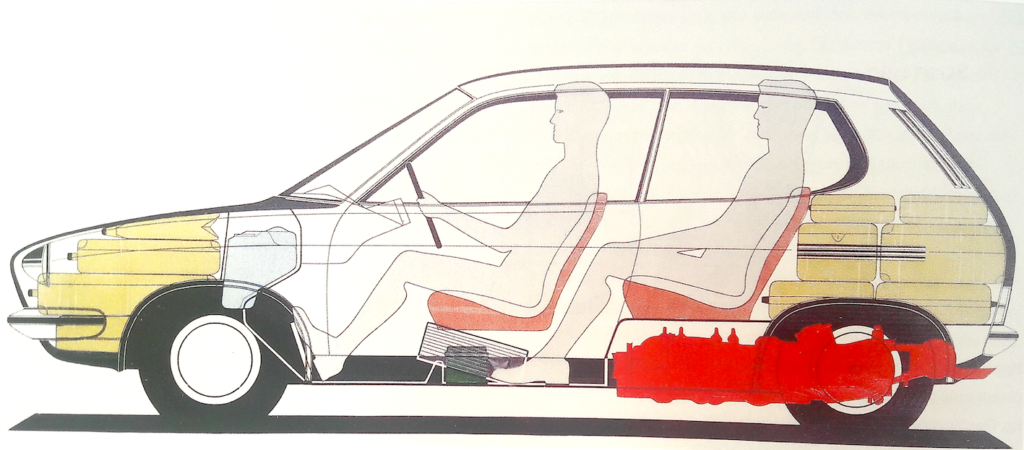
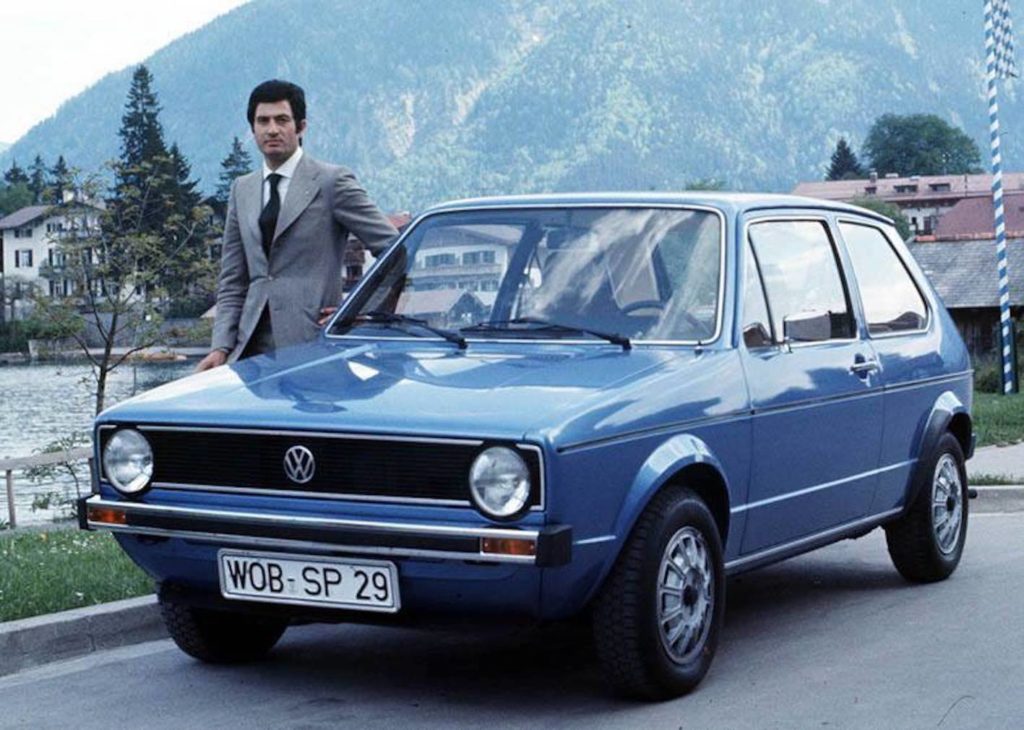
When Volkswagen’s iconic Beetle is being revamped, the name of Giorgetto Giugiaro is inevitably – and legitimately – put forward. However, the Italian designer arrived very late in the race. A few weeks after a gigantic test in Wolfsburg in May 1969, during which all the mock-ups of the Cox renewal project competed, Kurt Lotz, who was still VW boss for a few months, went to the Turin Motor Show, where he discovered that the latest successful cars had been designed by a certain Giugiaro.
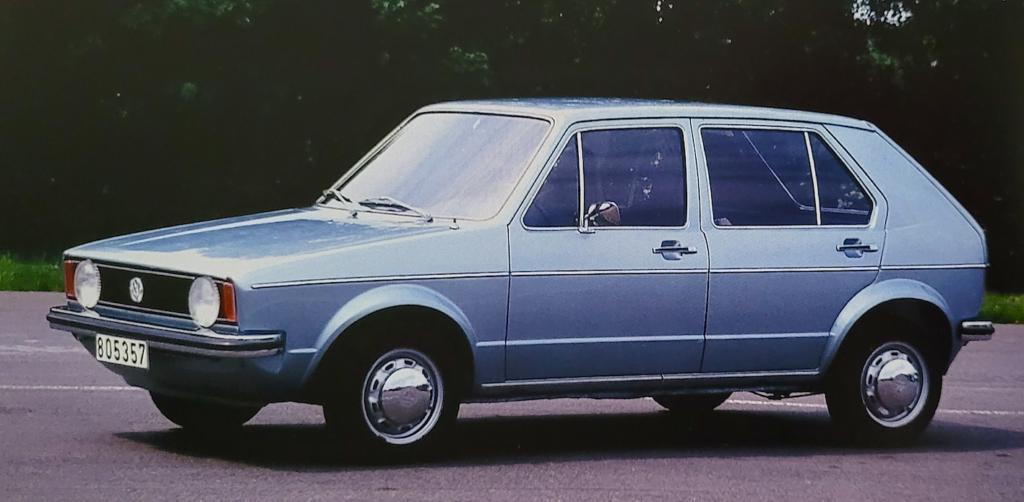
He recalls that “in December, Lotz contacted me to design a small touring car. I had carte blanche, but I had to move quickly and come up with a 1/1 scale model. In January, I was in Wolfsburg to present Italdesign’s work and that’s when the directors asked me to work on a complete range: Passat, Golf and Scirocco. I was totally flabbergasted! The EA337 project above will therefore be Giugiaro’s…
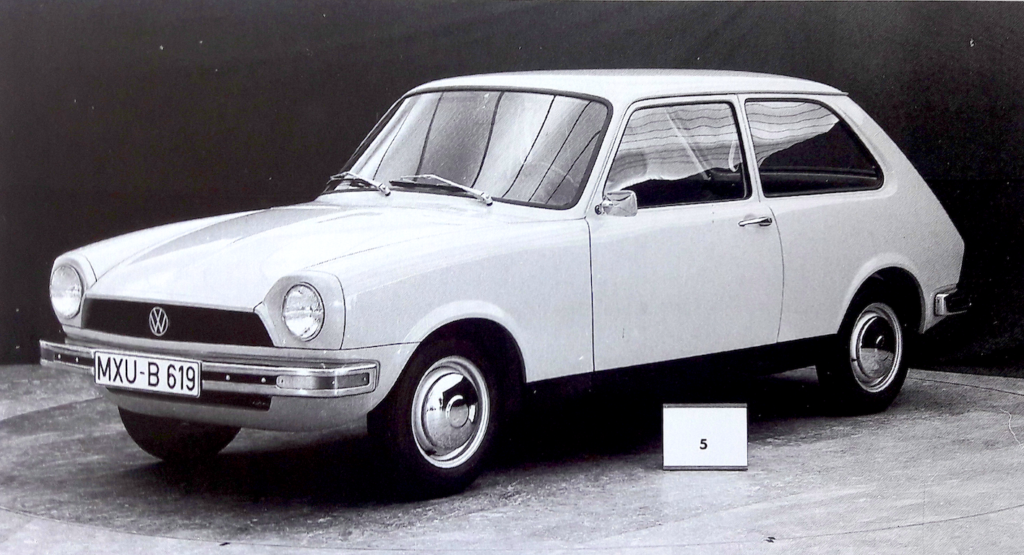
By the end of the 1960s, programmes to replace the Cox were coming from all sides: Auto-Union, Volkswagen, Porsche and even… Pininfarina. Here we reveal the proposals of the Italian coachbuilder, who worked to a specification from Volkswagen, but also to one from Porsche. The latter was quite extraordinary, since Ferdinand Piëch, who supervised it, had installed the engine in a central position under the rear seat! In May 1969, all the models in the programme were brought together for this famous test and, alongside the proposals from the future VW, a Fiat 128 was used as a reference.
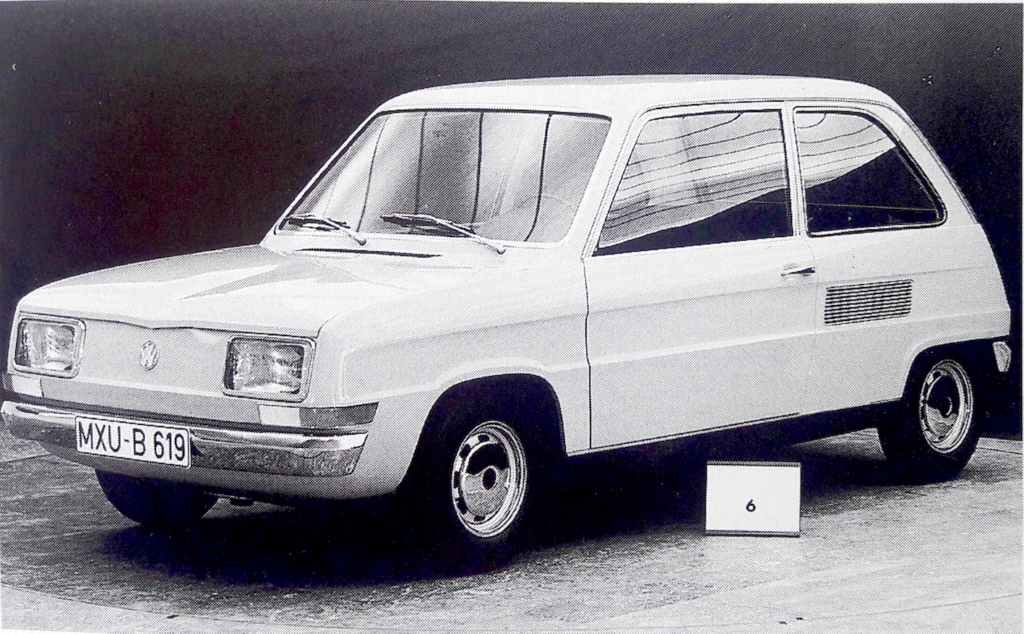
There are models produced in-house by Volkswagen, as well as by Auto-Union, Porsche and the Italian coachbuilder. Pininfarina exhibited four models: the EA 266 above was a proposal based on the mid-engined architecture designed by Porsche, and the other three were based on the underframe designed by Volkswagen, the EA 235 B (with one functional model and another in painted plaster – or resin) and the EA 235 B1, also functional.
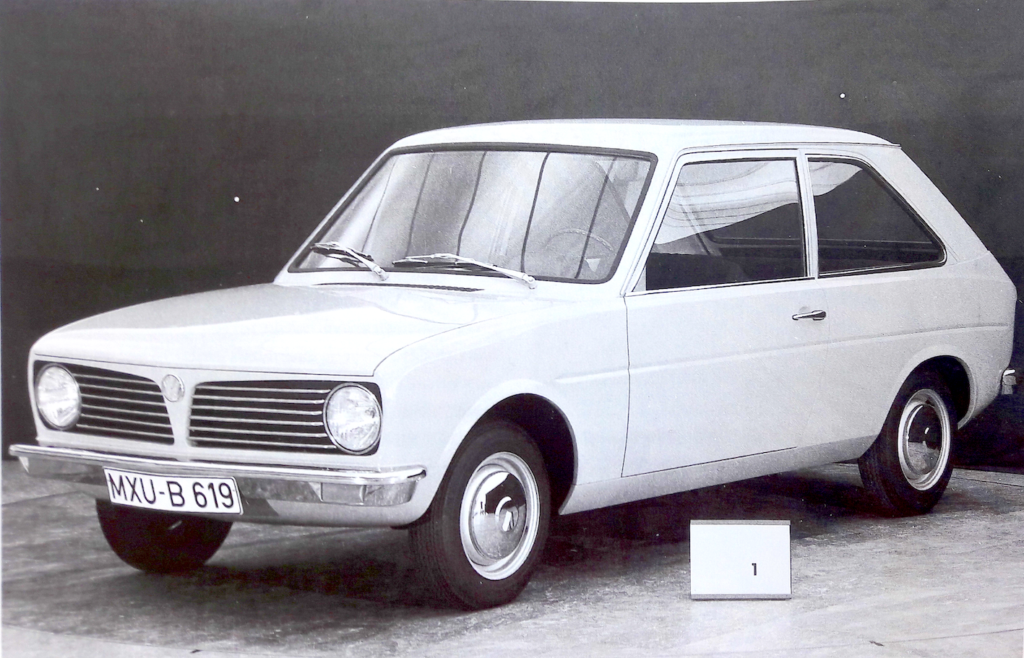
Both Volkswagen’s internal projects and those of the consultants (Porsche and Pininfarina) were ultimately rejected by the management of the day. Porsche’s project (EA266) did reach a stage close to pre-production, but Rudolf Leiding, Volkswagen’s new boss in the 1970s, stopped it just in time. Leiding wanted to move fast and reform the sleeping Volkswagen. He continued the work of his predecessor Kurt Lotz by developing the Audi range with a front-engined powertrain.
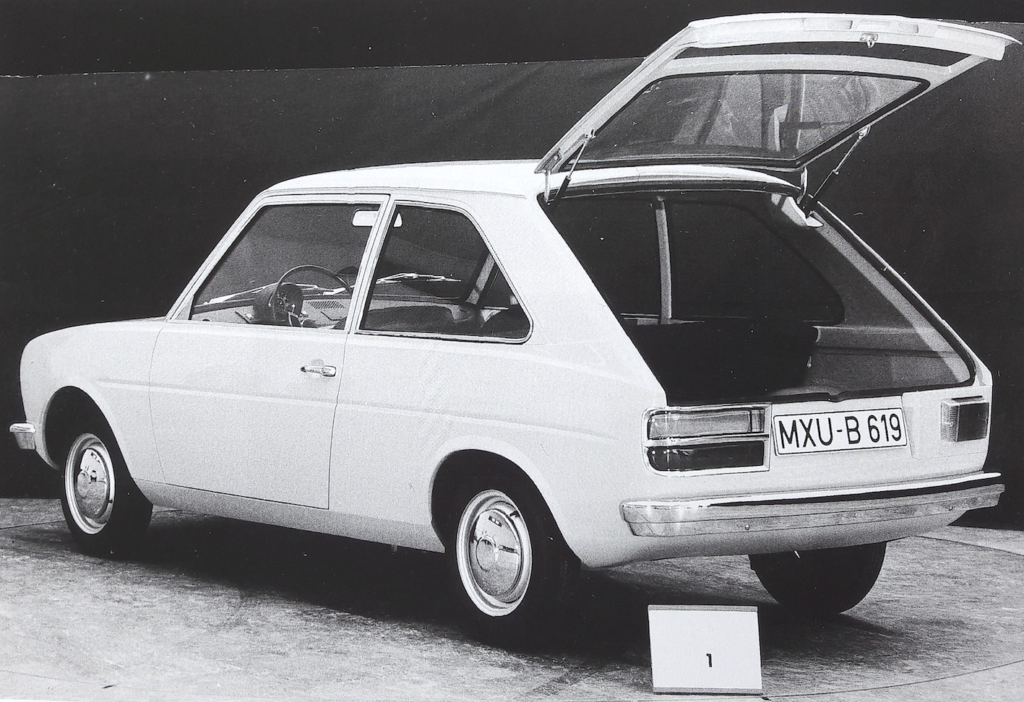
And he condemned the Porsche strategy for Volkswagen, with its mid-engine housed under the rear seat, and, in the ultimate humiliation, asked the sports car manufacturer to destroy the EA 266 project cars itself: a Tiger tank carried out the operation, during which only one survived, now on display in the museum. From that moment on, Ferdinand Piëch’s resentment towards Volkswagen grew, culminating in the episode in which Piëch went to war with his cousin Wolfgang Porsche, when the former wanted to take control of Volkswagen and the latter manoeuvred to have the opposite happen!
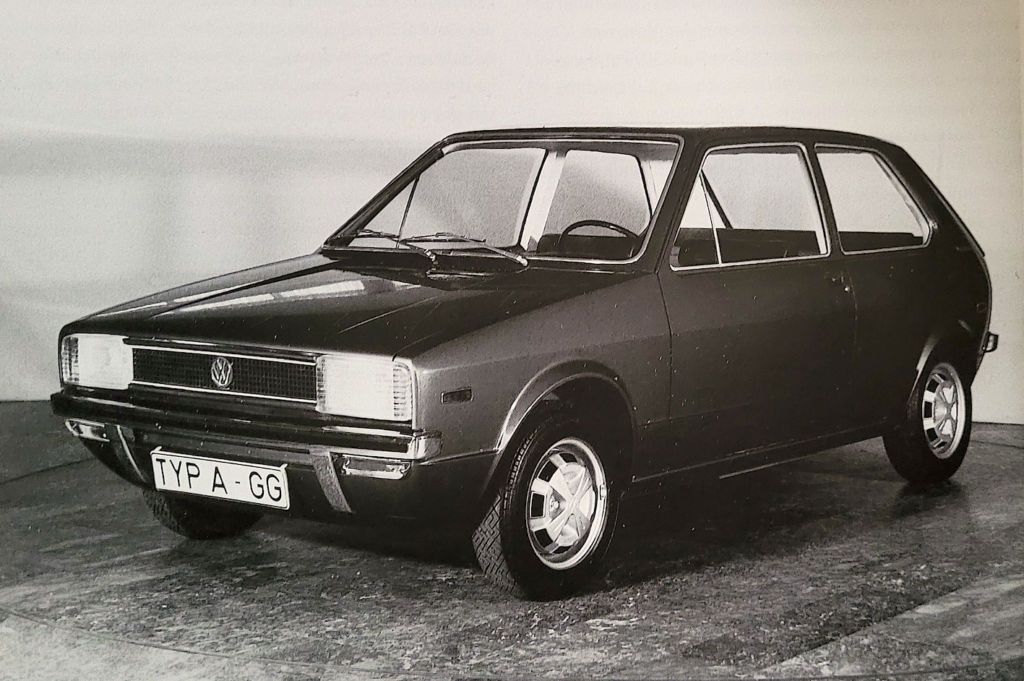
In 1969, at the time of this gigantic test, we had not yet reached that point. However, it’s easy to see that the change in the early 1970s was truly vital for Volkswagen, which – at last – entered the modern era by consulting Giugiaro just in time. However, Giugiaro’s first model did not yet show off its round headlamps. It’s a story reminiscent of the first Twingo mock-up compared with the final version!
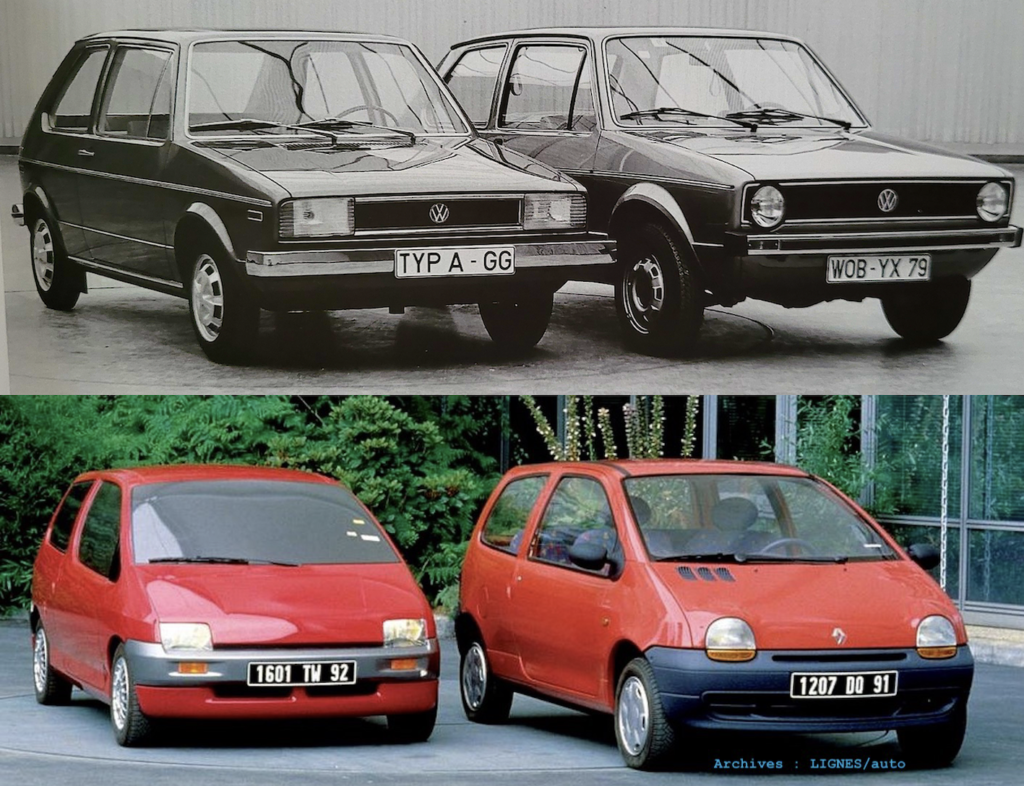
BONUS : THE PORSCHE GOLF
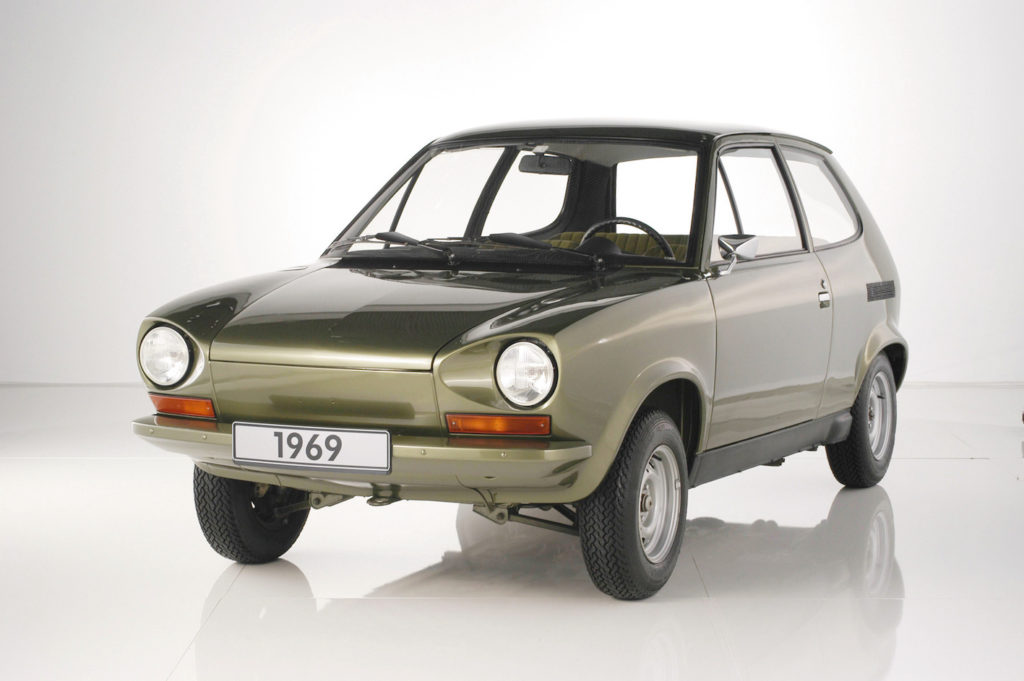
Porsche’s EA 266 project, led by Ferdinand Piëch, was an engineer’s car. It was a 3.59-metre-long saloon with McPherson suspension at the front and an in-line four-cylinder engine lying under the rear bench.
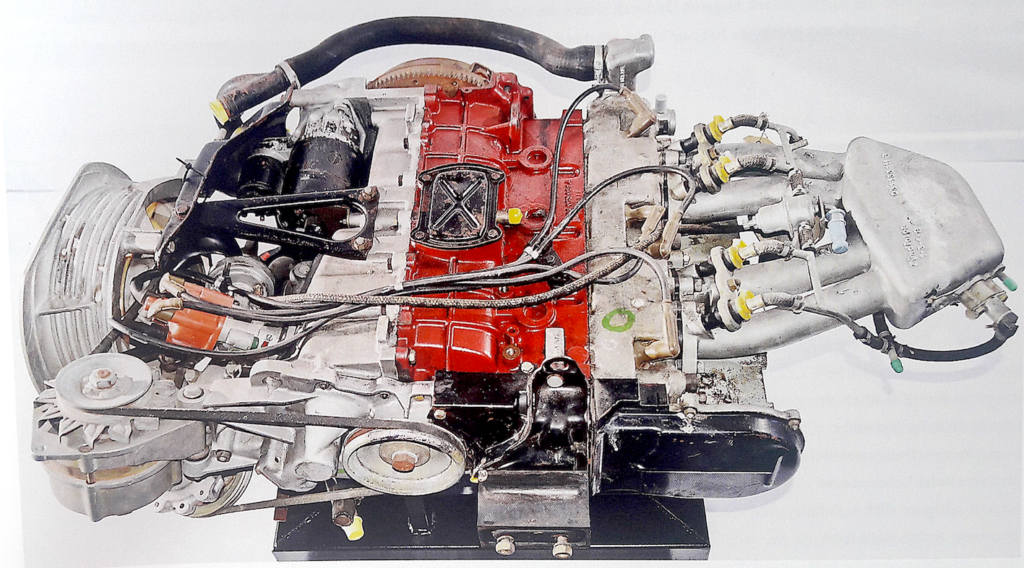
Its design was the brainchild of Anatole Lapine, the man who would later design the timeless Porsche 928. The new architecture made it possible to fit two boot compartments at the front and rear, and the height of the car was kept to 1.48 m, a feat considering the mechanical layout. However, tests of the prototypes revealed the poor rear passenger space, and the smell, noise and heat induced by this original engine layout.
